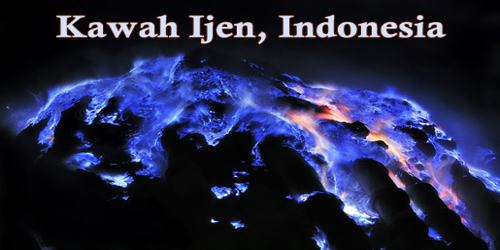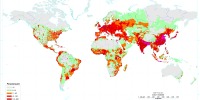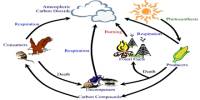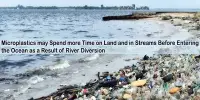The Door to Hell or Gates of Hell, actually known as the Darvaza Gas Crater (Turkmen: Garagum ýalkymy), is a natural gas field that collapsed into a cavern located in Derweze, Turkmenistan. It’s the stuff that nightmares are made of a gaping, fiery chasm tearing a hole in the Earth. The Darvaza gas crater or Door to Hell opened in 1971. It was set alight to prevent gases from spreading, and it’s still burning decades later.
It’s not volcanic. That’s not magma, this sinister flame pit was human-made and thought to be the result of a Soviet-era gas drilling accident, yet Turkmenistan has no official record. Geologists intentionally set it on fire to prevent the spread of methane gas and it is thought to have been burning continuously since 1971. The gas crater has a total area of 5,350 m2. Its diameter is 69 m (226 ft), and its depth is 30 m (98 ft). The Turkmen government hopes that the crater will become a popular tourist attraction. The surrounding area is also popular for wild desert camping.
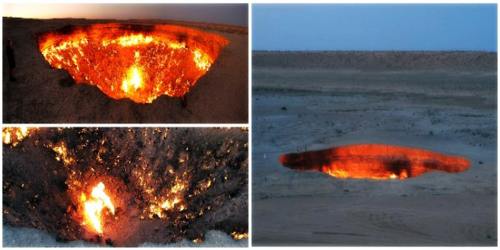
(Door To Hell or Gates Of Hell, Turkmenistan)
The gas crater is located near the village of Derweze, also known as Darvaza. It is in the middle of the Karakum Desert, about 260 kilometers (160 mi) north of Ashgabat, the capital of Turkmenistan. The gas reserve found here is one of the largest in the world. The name “Door to Hell” was given to the field by the locals, referring to the fire, boiling mud, and orange flames in the large crater, which has a diameter of 70 meters (230 ft). The hot spots range over an area with a width of 60 meters (200 ft) and to a depth of about 20 meters (66 ft).
Gas prospecting gone wrong, however, is the accepted explanation, Soviet engineers in 1971 bit off more than they could chew, drilling and hitting a gigantic underground gas cavern which then collapsed, forming a sinkhole and sucking the entire drilling rig into it. But nobody knows for sure. The early years of the crater’s history are uncertain: local geologists say the collapse into a crater happened in the 1960s, and the gases were not set on fire until the 1980s. There are, however, no records available of either the Soviet or Turkmen version of events.
The President of Turkmenistan, Gurbanguly Berdimuhamedow, visited the site in April 2010 and ordered that the hole should be closed. In 2013, he declared the part of the Karakum Desert with the crater a nature reserve. At that time, Turkmenistan announced plans to increase its production of natural gas, intending to increase its export of gas to many countries such as Pakistan, China, India, Iran, Russia, and Western Europe, from its then yearly production level to a new production level of 225 billion cubic meters (7.9 trillion cubic feet) by 2030. In 2019, he appeared on state television doing doughnuts around the crater to disprove rumors of his death.
The crater was featured in an episode of the National Geographic Channel series Die Trying. In the 16th July 2014 episode “Crater of Fire”, explorer George Kourounis became the first person to set foot at the bottom, gathering samples of extremophile microorganisms. An edited photograph of the crater was also released as publicity for the then-upcoming 2014 Godzilla film, with the image depicting MONARCH agents and vehicles investigating the site.
The Darvaza Gas Crater (Door of Hell) isn’t the only Middle Eastern reserve of natural gas that’s been on fire in recent years. In neighboring Iraq, the Baba Gurgur oil field and its gas flame have been burning for over 2,500 years. Natural gas deposits and volcanic activity alike cause these anomalies near earth’s surface, especially cropping up along fault lines and in areas rich in other natural gasses.
Information Sources:

